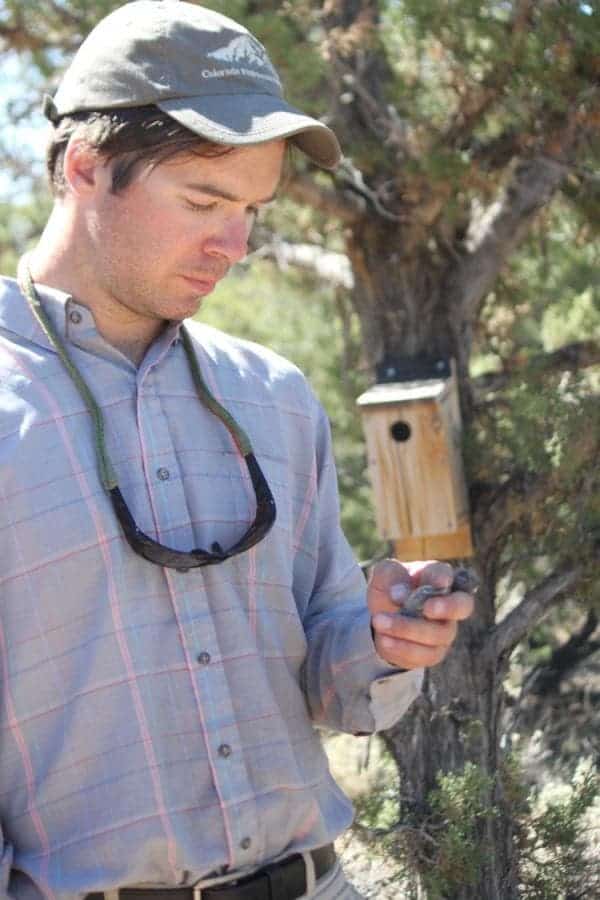Biologists found that birds which are constantly exposed to noise pollution from oil and gas operations may become chronically stressed, with grave consequences to their reproductive health. In some cases, the growth of their offspring is stunted. Scientists hope this work will help the industry design less invasive operations.

The team included scientists from the University of Colorado Boulder, California Polytechnic State University, and the Florida Museum of Natural History.
Researchers led by Nathan Kleist, who graduated with a PhD in evolutionary biology from CU Boulder in 2017, erected 240 nest boxes on 12 pairs of sites near oil&gas operations in New Mexico. The nesting habits of three species of cavity-nesting birds — the western and mountain bluebirds (Sialia mexicana and Sialia currucoides), and ash-throated flycatchers (Myiarchus cinerascens) — were followed over the course of three breeding seasons.
To assess reproductive health, researchers measured nestling body size and feather length but also took blood samples from the adult females. Across all species, the females exposed to noise pollution showed lower levels of the stress hormone corticosterone.
At a first glance, this seems to suggest that the birds are, in fact, not stressed by the noise pollution.
“But what we are learning from both human and rodent research is that, with inescapable stressors, including post-traumatic stress disorder (PTSD) in humans, stress hormones are often chronically low,” said co-author Christopher Lowry, a stress physiologist in the department of integrative physiology at CU Boulder.

In other words, when faced with overwhelming stressors, animals will often develop “hypocorticism” as an adaptation to save energy. Hypocorticism is linked to inflammation and lower weight gain in rodents. So counterintuitively, both low and high-stress hormone levels can be unfavorable for many species since it leads to dysregulation. In this particular case, dysregulation due to noise comes with negative reproductive consequences.
[ALSO SEE] US National Parks are too noisy
Researchers found that nestlings in the noisiest areas had smaller bodies and feathers. Females nesting in the noisiest environments also laid fewer eggs. Intriguingly enough, nestlings in lower noise also grew smaller compared to a baseline, albeit not as much as those hatched in high-noise environments. The quietest areas are exposed to more predators making the adult birds more cautious as they go to and from the nest. In loud areas, on the other hand, machinery noise masks the calls from other birds, stressing moms and nestings. The sweet spot was found to be in areas of moderate noise where nestlings seemed to grow the fastest
“If you were trying to talk to your friends and your children and you were always at a loud party, you would get worn out,” said Kleist.
What’s striking is that even the western bluebird — a species previously suspected to be resilient to noise — showed reduced hatching rates.
Though none of the three species studied by the researchers is endangered, the authors suspect that other species nesting near noisy areas — some that are endangered — experience similar effects. In 63 percent of the protected areas, anthropogenic noise already doubles background-sound levels.
“There is starting to be more evidence that noise pollution should be included, in addition to all the other drivers of habitat degradation, when crafting plans to protect areas for wildlife,” said Kleist, now a visiting professor at State University of New York. “Our study adds weight to that argument.”
Findings appeared in the journal Proceedings of the National Academy of Sciences.


